
Renetto. Paul Robinette. Remember him? He makes about $55 a day from YouTube, and I once stalked him and shaved my head to assume his persona. He’s one of the guys behind one of the most interesting video website stats and mobile applications you’re bound to love and forget. It’s called MyU2B. See– I had to look at the website just to get that stupid name right.
The good news? If you’re an OCD creator or media buyer, than this is (and you can quote the guy who wrote the book on YouTube) “the crack cocaine of video statistics.” The bad news? The name is so damned forgettable I want to punch Paul Robinett in his branding boob. Half the reason I’m writing this post is so I can find his website searching the many alternative names my brain has given MyU2B: u2be, myu2be, ub40, u2b4, my2be u2be u2bme, and finally “renetto, youtube, stats, website, with, stupid, name.”
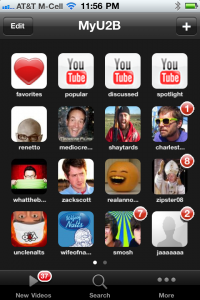
MyU2B is my indispensable iPhone YouTube viewing app because it’s incredibly easy to sort by my favorite creator’s (people, channels, accounts, profiles) most recent videos. This is a common but impossible task via the caveman-like primitive search functions on YouTube’s own mobile app, and I call that a “deal breaker” or “functional obsolescence” for any regular viewer. MyU2B tells me exactly how many videos my favorite person or channel has posted since I last checked them. It solved a problem most don’t yet know we have.
The app (free and $1.99) also allows me to “super subscribe” to select people (although I haven’t figured out how to delete people like the incorrect jaaaaaa). There are about 2-3 dozen people I don’t want to ever miss, and for that I prefer this app to using YouTube on a computer. On YouTube I’ve “oversubscribed” like many people, so I miss some fresh videos by my favorite peeps. It really sucks to not be current on some of my favorite creators or friends.
The MyU2B stats site, although new and somewhat buggy, is entirely different (yet shares the horrible name). It gives you some pretty decent estimates of how much money each channel/person makes on could make (per comments below) on YouTube, and even sorts estimated revenue by individual video. That’s badass, even if it’s assuming CPMs (revenue per view) that are impossibly inconsistent and volatile. It’s a cool tool just to track who’s getting views and comments… instead of the somewhat archaic method of tracking subscribers… like on VidStatsx. Vidstatsx is an equally crappy named but remarkably useful website, though the latter is a bit too focused on subscriptions (which is not nearly driver of daily views it once was). And tip from Zipster08, who I never miss (despite the mocked screen shot): allow MyU2B to load completely before searching for someone. (Zipster checks hourly). MyU2B doesn’t yet allow you to bookmark or link to a specific search string, but it does index more than 11,000 individual channels.
See below for an example… are they the potential estimates accurate? I don’t know. YouTube doesn’t give me reporting this precise, but I know for a fact that CPMs by individual videos for the same creator can vary from pennies to dollars — by individual video.
Since we YouTube Partners are all contractually obliged to conceal our revenue, it’s hard to know if it’s over or understating revenue/earnings. But feel free to comment (anonymously) if you want to share feedback on its precision! I’m glad it’s not accurate, because I don’t want people thinking about the money I earn from YouTube (it’s equally embarrassing whether it’s high, low or accurate).
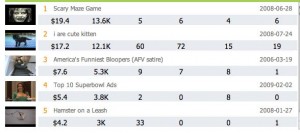
Finally, let’s help these useful resources with their branding. Anything, including the word “pizzle,” would be better.


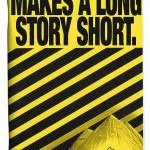
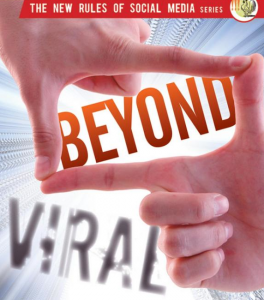

 Read Larry’s
Read Larry’s 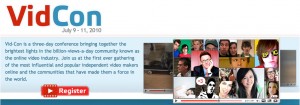



 Every day, I run across FEAR of marketing on the Web. We’ve got to work together to help people overcome this fear in 2010.
Every day, I run across FEAR of marketing on the Web. We’ve got to work together to help people overcome this fear in 2010.
